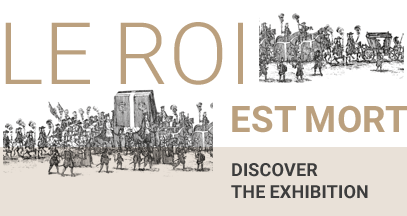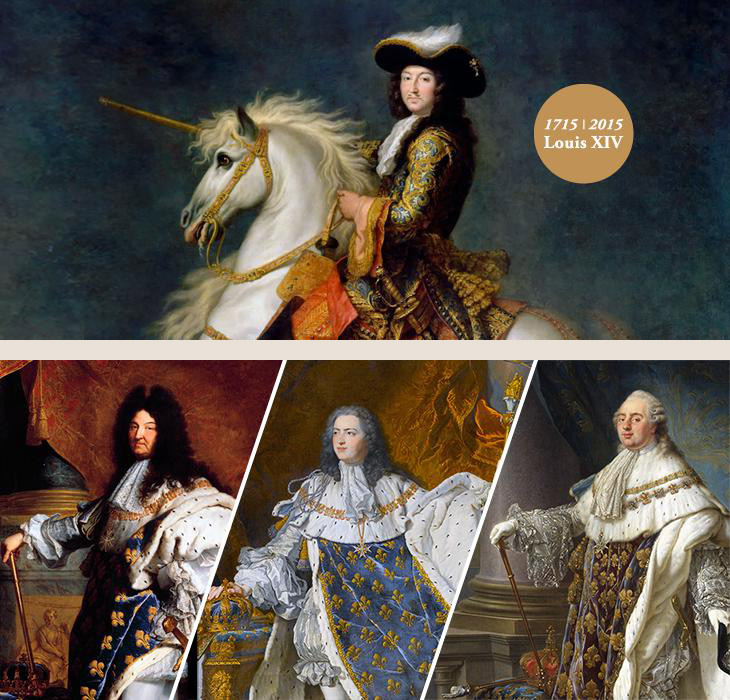Louis XIV, the king of social networks

During his reign Louis XIV controlled power, his power, like a master craftsman. We might even say, at the risk of sounding anachronistic, he was a master of social networks.
Having succeeded his father in 1643 at the age of 5, the young Louis Dieudonné received a complete education befitting a future sovereign. Mazarin taught him politics and the affairs of the Kingdom; his mother, Anne d’Autriche, devotion; the Abbot Hardouin de Péréfixe took charge of his schooling; the Baronne de Beauvais very officially removed his innocence; and last but not least, his teachers for drawing, calligraphy, guitar, horse riding and fencing made him a perfect gentleman.
However, it was his dance teachers who instilled in him the first great passion of his life. Louis XIV was an exceptional dancer and it was through this discipline that he started to catch the eye of his subjects from a young age. With movement, music, show and the circulation of this show, it was already the audio-visual essence of YouTube.
The king appeared on stage and made a name for himself through his performances. At the age of 14 he found his story and logo, serving his greatness in a role that was fixed by posterity: that of the Sun King, through his legendary performance of the Sun in the “Ballet de la Nuit” (Royal Ballet of the Night), a piece that celebrated the triumph of Day and the Sun (performed by Louis himself) over Night (final victory in the Fronde wars). The king was young, he danced. He was a veritable YouTube personality spreading the brilliance of his radiant glory.
When Mazarin, his First Minister, died on 9th March 1661, the king was 22 years old. At dawn the following day the monarch summoned his ministers. “Sir,” he said to the Chancellor, “until now I have agreed to allow my affairs to be governed by the Cardinal; it is time for me to govern them myself… The stage is changing.”
The device used by the king to exercise his absolute power, neutralize the court and tame the big personalities had a name: Versailles. It was a lengthy project that culminated in 1682, when the king ordered the whole of the French Court and government to move there.
He wanted all the courtiers to converge towards this single platform where everyone in the court could, in real time, view, watch, share, comment, observe and follow, according to conventions and confidentiality worthy of Mark Zuckerberg and the creators of Facebook.
Versailles was like Facebook. Anyone who wasn’t there, who didn’t make themselves known or who wasn’t seen, quickly no longer existed, something that gave birth to the monarch’s famous declaration, “look, there’s someone I never see”. It was a way of cementing the disgrace of a courtier who was too often absent from the platform.
Assembled in Versailles, brought together under his hand within a limited area, the court functioned in dreamlike real time. The pomp and ceremony, with its strict codes, made the king’s life public, and therefore shared.
Through its various public, private and secret groups and its constant stage performance, Versailles-Facebook created the instantaneousness, capillary action, complexity and shared social life of the digital network, well before its time.
The king’s greatness had to be continually in the spotlight, talked about and shared publically. It was this that a small group of raconteurs worked on, at the initiative of Colbert in the Académie royale des Inscriptions et Médailles. This group was in charge of creating the short, memorable phrases that shared the king’s greatness in just a few words.
These were emblems and mottos, engraved onto medals or the pediments of monuments. The most iconic were the ones that bore the Sun King’s famous phrase: “Nec pluribus impar”: “Above all”.
In short, this small Academy was sort of like the king’s Twitter team. They were the ones who laconically decoded the monumental paintings by Le Brun for the vault in the Hall of Mirrors and commented on the career of the great King. These inscriptions generated fierce quarrels between Tradition and Modernism. They were no longer written in Latin but in French: this was the first controversy. Then texts considered too pompous and lengthy were discarded, to be replaced by cutting sentences of less than 140 characters, proposed by Racine and Boileau.
The Academy also controlled the field of images, paintings and portraits. Versailles was transformed into a Throne room, with more and more depictions of famous figures. This iconographic extravagance worked like a royal Instagram account, constantly fed by a frenzy of images from the reign.
But the reign had not yet distinguished itself in the blogosphere. This was accomplished in 1709. By 12th June everything was going wrong: almost the whole of Europe had sided against France in the War of the Spanish Succession, and an exhausted France saw defeat after defeat. Louis took up his parchment and ink and sent a call to the nation. Again, another first: a French king addressing his subjects to explain the geopolitical situation, his desire to establish peace but nevertheless the need to continue the war, and in order to do so to create an energetic spur of patriotism. The text was read in every parish in the kingdom and helped consolidate French national conscience.
Throughout his life Louis XIV navigated social networks like a skilled expert, creating from the beginning of his reign the phrase: “nec pluribus impar”: “like no other!”
Article written by Michel Danthe, published 15th September 2015 in the magazine Le Temps.























